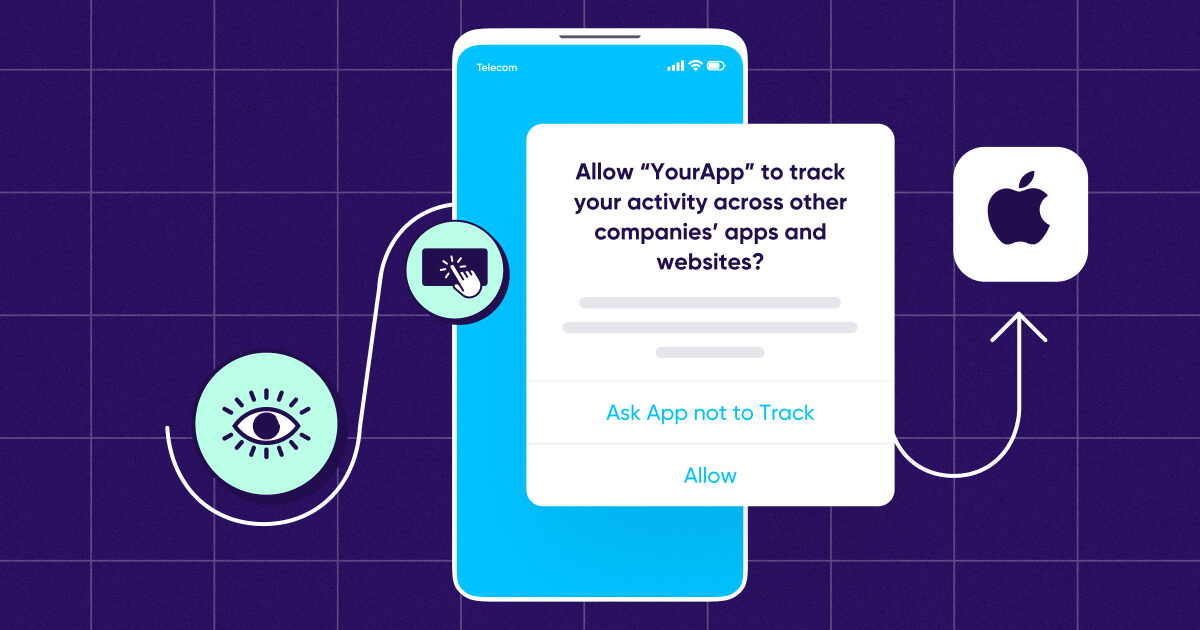
How insights aid commerce media growth

The ground is shifting quickly under the landscape of commerce and retail media networks and the opportunity is there for those savvy enough to recognize it.
With the rise of non-endemic advertising — where brands that don’t directly sell products on a platform still advertise on it (or off it – when utilizing offsite advertising) — commerce media networks now have a golden opportunity to accelerate their growth trajectory.
However, to effectively capture and maximize these opportunities, the combination of precise measurement models and strategies has become more vital than ever. With this alignment, brands can develop better-targeted campaigns, achieve higher engagement rates, and ultimately drive more sales. An increase in ad spend with the retail network will quickly follow.
In this blog, we’ll explore the potential and explain why and how a combined measurement and data collaboration platform can help retail media networks attract greater ad budgets.
The growing non-endemic opportunity
Beyond the more obvious natural fit that is endemic advertising — where brands sell goods on the platform they advertise on itself — non-endemic advertising represents an even greater untapped massive potential for commerce and retail media networks.
According to Warc projections, retail media alone is projected to account for 13.6% of all ad spend this year, for a total of $141.7B. eMarketer suggests that $1 of over every $6 of digital ad spend in the US will go towards retail media in 2024, while 73% of advertisers expect to spend more on retail media networks in the next 12 months, according to McKinsey.

The reason for this growth is clear. Commerce media networks reach audiences that brands otherwise couldn’t reach. A gaming brand, for instance, might collaborate with an electronics store to build audiences based on data related to gaming console purchases. Once the ideal segments are identified, the commerce media network can reach these audiences on their onsite (owned) or offsite (third-party) channels, in privacy-centric and effective manners.
With the upcoming deprecation of cookies, commerce media provides an effective channel for reaching audiences in a privacy-preserving manner. According to a recent study by the IAB, many of the traditional methods for user acquisition and retention will be unattainable in this new reality. Utilizing a data collaboration platform that runs on a data clean room and privacy enhancing technologies promises business continuity by enabling effective acquisition and retention methods through privacy-preserving technologies.
Why the current measurement offering falls short
Commerce media networks have traditionally placed a strong emphasis on using their own in-house analytics for evaluating campaign performance. This approach has often been driven by the unique insights these networks have into their specific customer base and shopping behaviors, which they are best positioned to analyze deeply. However, the depth of data it offers is limited.

Obviously, proving ROI or ROAS is the holy grail for marketers which is why the current wave of commerce media networks require the ability to measure and quantify results to sustain growth. According to Nielsen, brands that can effectively measure ROI are more likely to increase their marketing spend, as they can make a strong case for further investment. This presents an opportunity for commerce media networks willing to expand the breadth, depth and actionability of their data.
In a landscape in which performance is key, the ability to measure and demonstrate effectiveness will emerge as a key competitive advantage. Commerce media networks that can consistently prove their value to advertisers will not only survive but thrive in the evolving marketplace.
These advertisers are increasingly demanding a better understanding of ROI on their spend. In the aforementioned McKinsey study, delivering performance such as high return on advertising spend (ROAS) was cited by respondents as the No. 1 reason for selecting retail media networks. In the new yet rapidly evolving world of commerce media, the transition from brand-centric approaches to performance-driven marketing is reshaping this nascent industry. This shift underscores the critical need for accurate and effective measurement of campaign effectiveness.
What ROAS-driven measurement looks like
Commerce media networks are therefore stepping up their game when it comes to nailing performance-driven measurement. With an understanding of the critical role of ROI in advertising, let’s take a closer look into what makes ROAS-driven measurement tick and unpack the complexities in today’s advertising ecosystem.

The unique challenges of measurement
Performance measurement comes with a myriad of complexities, including the following:
- Omnichannel measurement
The first is how to present cross-channel campaign success and effectively measure return on ad spend, customer lifetime value (CLTV) and more, for all of the onsite and offsite campaigns you’re running. They need to give the brands that work with them an omnichannel view of all of their activities within their network so they can accurately understand the value and double down to grow.
- Data quality
Another significant challenge is ensuring data quality. To effectively measure success on commerce media networks, brands require transparency and granular data. Comprehensive insights can help determine if sales are incremental and how they interplay with other commercial activities. This frequently involves considering various drivers of sales and implementing commerce media as part of a broader media mix.
- Granularity
Experts such as Kevin O’Farrell suggest that brands require granularity in data to assess incremental sales and how they integrate into broader commercial activities. One challenge involves proving the incremental impact of commerce media formats. Modelling then becomes an effective tool to understand channel interplay and identifying points of diminishing returns, constantly evolving in retail media.
Metrics that matter
So how can we measure effectively? As with all campaigns, it’s important to align KPIs with specific campaign objectives, and this is particularly true for commerce and retail media. A campaign aiming to launch a new item, for instance, may focus on household penetration and trial, while another might aim to amplify the base brand during a tentpole event.
Standard media metrics such as CPM, click-through rates, and impressions can often serve as a good starting point, but commerce and retail media need to go beyond them to more holistically assess campaign impact.
Reach and frequency reporting—which involves generating detailed reports to inform and optimize the campaign’s reach and frequency—becomes essential, ensuring that the advertising messages are seen by a sufficient portion of the target audience and with an appropriate frequency. Brands can then gain a deeper understanding of how many people are seeing their ads and how often.
Once we turn towards conversion metrics, however, attributed sales, sales lift, return on ad spend (ROAS), and incremental ROAS (iROAS) offer an insight into the effectiveness of commerce and retail media in driving sales. Incremental sales and iROAS, in particular, are important for understanding the additional value brought by retail media campaigns, such as attracting new customers to the brand or category, increasing basket size, or frequency of purchases.
Using data collaboration partners, commerce media networks have the ability to deliver “closed-loop” attribution, which allows advertisers to link purchase data back to their campaigns so they can optimize and further drive sales. Through this attribution, commerce media networks can more accurately measure incrementality by pinpointing what types of consumers are driving incremental business.
Ultimately, it puts advertisers one step closer to securing a more holistic view of campaign performance. Not only does all this show brands immediate impact but also points us towards the future potential of commerce media networks.
Making sure data is actionable
The best approach to highlight the unique advantages of commerce and retail media is not simply presenting the metrics but leveraging a platform that provides actionable insights.

Because it’s not just about gathering large volumes of data; it’s about intelligently synthesizing them to create a deeper understanding of the campaigns, and ultimately the buyer. This understanding then informs targeted marketing strategies that speak to the target audience, driving engagement and sales.
However, it goes beyond the “what”, which is gaining insights from your data, and also requires a deep-dive into the “how” you gain those insights. For example, if extracting answers from your data is an arduous task, it isn’t feasible to utilize it to continuously power campaign adjustments and ultimately business growth. Leveraging AI, AppsFlyer offers the ability to take data exploration to the next level, without boundaries, by seamlessly translating any free-text question into code that runs a report and extracts the insights needed. For example, ask the chat tool the number of customers that came from a specific campaign on a specific day that turned into whales, to get a deeper understanding of the value of that campaign.
Utilizing a platform that offers continuous campaign measurement and insights, which align with a brand’s KPIs and goals, in real time offers refined segmentation capabilities, as these learnings can be used for audience modeling.
Combining measurement with data collaboration platforms
Working with data collaboration partners makes sense. That’s because a single platform for both data collaboration solutions combined with advanced measurement and attribution capabilities comes with built-in advantages.
By integrating these capabilities, advertisers can achieve a lower total cost of ownership, as it eliminates the need for multiple tools and systems. This integrated approach not only enhances cost-effectiveness but also allows for real-time business insights and agile campaign adjustments.
With built-in measurement tools, brands can gain immediate insights into campaign performance, enabling quick adjustments in audience segmentation to maximize growth.

Imagine the potential for growth when using a data collaboration platform that has built-in tools for reach and frequency measurement. Instead of waiting for all campaign results to eventually trickle in, brands can measure in whatever cadence makes sense for their campaigns and tweak segmentation to optimize potential.
In the transformative world of commerce networks, the emergent trend of non-endemic advertising is not just a shift, but a sea change. The future of commerce media intersects advanced analytics and strategic creativity, and hinges on the ability of these platforms to not just capture data but to transform it into meaningful strategies, adapting to consumer responses and market trends with precision and creativity.
In this context, it’s not just about surviving in a competitive marketplace; it’s about leading a revolution to promote improved business results and drive mutual growth.
Key takeaways
- Advertisers’ demand for ROI on spend: Commerce media networks are experiencing significant growth opportunities through non-endemic advertising. This has led to rising demand from advertisers for a better understanding of the ROI on their ad spend, driving a shift towards more performance-driven marketing approaches.
- Adopting precise measurement models: Effective capture and maximization of advertising opportunities require precise measurement models and strategies for brands to develop targeted campaigns and drive higher sales.
- Addressing performance measurement challenges: Performance measurement in commerce media faces challenges such as omnichannel measurement, data quality, and the need for granularity to assess incremental sales effectively.
- The need for actionable data: It’s essential to incorporate metrics like reach, frequency, and conversion to holistically assess campaign impact. But using platforms that provide actionable insights and continuous campaign measurement aligned with brand KPIs is crucial for effective audience modeling and targeted marketing strategies.
- Combining measurement with data collaboration platforms: An integrated platform for data collaboration and advanced measurement enhances cost-effectiveness and allows for agile campaign adjustments, essential in the rapidly evolving commerce media landscape.




